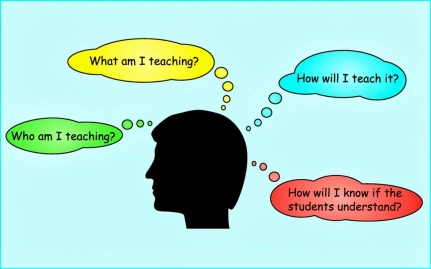
The course goals of Accomplished Teaching were…
- Examine and implement effective planning/preparation, instruction and assessment strategies from Domains 1 and 3 of the Danielson Framework to maximize student learning.
- Analyze the impact of instruction on student learning through personal and collaborative reflection on 1) written lesson plans, 2) videotaped segments of instruction/learning, and 3) student work.
- Practice the fundamentals of individual, partner, and small group reflective practice to promote continuous learning. (Domain 4 of Danielson Framework: Professional Responsibilities)

Individual and collaborative reflective practices are critical components of effective teaching. One way that I have been reflective in my teaching practice is through our building Data Teams process. I work with my team to look at student assessment data, analyze effective and ineffective teaching strategies, and design lessons to maximize student understanding and learning growth (Danielson 1e, 3e, 4a, 4d). I also reflect and make adjustments during and directly after a lesson. If I see that students are struggling with a concept or that something is hindering a student’s clear understanding of the lesson, I will either make adjustments at that moment, or will change things up for the next day. I take into account the struggles that my students are having and come up with a strategy or strategies that I think will be most effective in helping them understand and get the most out of the lesson (Danielson 3c, 3e, 4a). As a Safety Net (reading and math intervention) teacher, I consistently team up with different grade level teachers to learn more about the students I’m working with, share assessment data, and communicate back and forth on student progress and teaching strategies that might work best for those students (Danielson 1b, 4a, 4d, 4e). Continuously reflecting on my teaching practices, both individually and with others, helps me to become a more effective teacher.
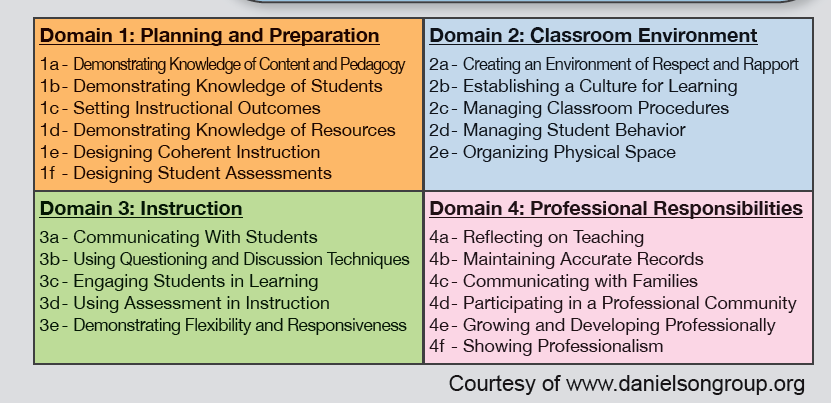
Throughout this course we have gone much deeper into learning about what it means to reflect. We analyzed the Danielson Framework and how it can be a guide for us in our reflective practices. The Danielson model is a research-based teacher evaluation framework. Studies have shown that students who made high levels of growth had teachers who exhibited or used certain instructional techniques and strategies. These high quality teacher attributes and best practices were combined together to create the Danielson Framework. The domains and their subsets can be used as springboards for staff development, teacher improvement, and goal setting. The framework also helps to create a more uniform and equitable evaluation system, so all principals in a district are using the same criteria for assessment. The framework is an excellent guideline for teachers to use to see where their current teaching practice falls and what they can do to improve their skills.
To be a reflective educator we must be committed to our own continual professional development. A reflective educator also stays focused on student learning and development as their top priorities. In addition, reflection requires drawing on our past experiences, but also being willing to listen and take into account different ideas and perspectives in order to learn and build up the tools in our educational toolboxes. This quote from the book shows how challenging, yet rewarding being a reflective teacher can be… “Significant learning generally involves fluctuating episodes of anxiety-producing self-scrutiny and energy-inducing leaps forward in ability and understanding” (Brookfield, 1992, p. 12).
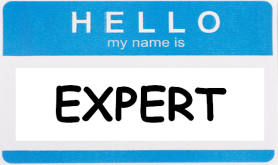
During this course, we also analyzed what it means to be an accomplished teacher. Through individual reflection I came up with the following list of the attributes of an accomplished teacher.
- Uses formative and summative assessment
- Asks higher level questions
- Has high expectations
- Involves parents
- Instills a love of learning
- Uses research based strategies
- Includes students by sharing learning goals, rubrics, and success criteria
- Gives students feedback
- Is guided by Common Core standards
- Is a team player with other staff
- Is reflective with self and others
- Finds opportunities for improvement and learning
- Is a good listener
- Encourages and motivates students
- Instruction is data driven
- Differentiates instruction
- Scaffolds instruction (I do – We do – You do)
- Knowledgeable about resources
- Good communication skills
- Coaches students individually and in small groups
- Teaches students that they are responsible for their own learning
- Encourages active student participation
- Excellent classroom management and systems and routines
- Positive attitude
- Uses a variety of media and teaching resources
- Adaptable and flexible
- Inspires students
- Compassionate
- Capitalizes on teachable moments and student interests
What I learned throughout this course is that an accomplished teacher takes time to reflect individually about her own practice. It is hard to carve out this time in an already over-packed week, but it is very important to fit in time to process your teaching and your students’ learning. After doing this, you can decide to make changes in your instruction or to remember which strategies were particularly effective. In addition, it is important to reflect with other staff members. A PCC team is a great avenue to share ideas and reflect with a team of educators. The PCC team uses formative and summative assessments to drive instruction. The team also focuses on Common Core standards and discusses the strengths and weaknesses of each student. They discuss differentiated strategies that they feel will improve student learning for all students, whether they are remedial or advanced. An accomplished teacher takes the time to listen to other teachers’ ideas and takes a look at multiple perspectives. She encourages others to share and offers a non-judgmental atmosphere for reflection and teamwork.

An accomplished teacher always keeps students and their learning as the top priority and encourages others to do the same. We need to remember that we don’t know everything, we are always learning and improving, and that we and our colleagues have a vast amount of knowledge and experience to share with each other. We also need to remember that learning takes time and we and others will be making many mistakes as we learn. That’s OK! It’s part of learning and we need to give ourselves and others permission to make mistakes and not be perfect.
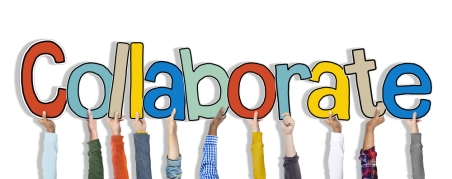
During this course we also had the opportunity to team up with another student and collaboratively plan lessons that we would teach to our students. As a teacher, this is something that we rarely have time to do in practice, but it was very helpful. Discussing and asking each other questions about our prospective lessons helped us to clarify and reflect on our thinking and planning. After we taught our lessons, we watched each other’s videotaped lessons and reflected on how the lessons progressed. We offered feedback to each other and commented on these new ideas. Teaching is most often an isolating profession, but taking time to work with, or observe another teacher can help us to hone our own craft and also share our ideas with others.
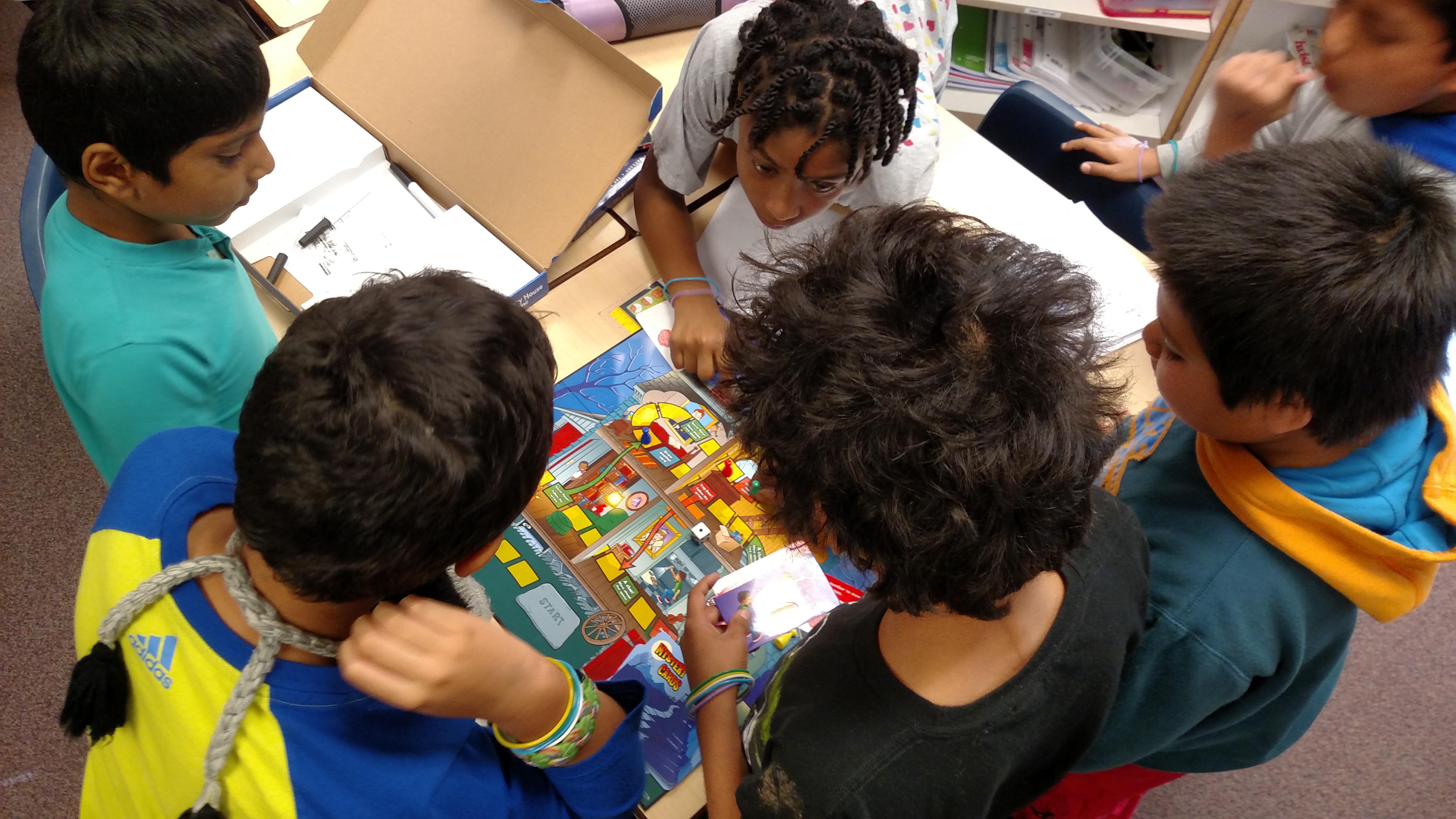
At the end of the course, I researched best practice strategies for teaching multiplication facts. Van de Walle suggests some great strategies to help students master these facts. Two good websites that he recommends are www.fun4thebrain.com, which has fun fact practice games and http://kentuckymathematics.org/pimser_printables.php, which has printables for teaching and practicing math facts (Van de Walle, Karp, & Bay-Williams, 2013). Another effective strategy is using music and rhymes to help students to remember their multiplication facts. “When information is put to rhythm and rhyme these musical elements will provide a hook for recall. Songs, chants, poems, and raps will improve memory of content facts and details through rhyme, rhythm, and melody.” (Brewer, 2012)
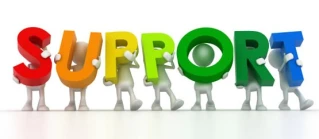
I am supporting my colleagues in our reflective practice by sharing these findings with my fourth grade data team. We are focusing on multiplication for our Professional Growth Goal and in our data team cycles. These strategies and findings will be helpful to all of us in order to help us reach our goals. As we try out these different strategies, we will come back together and reflect on student learning and either adjust our teaching or continue on with additional strategies. In addition to sharing my research paper with my team, I am also sharing all the resources and the YouTube videos that I am finding to help our students learn their facts through rhyme and song. By sharing and reflecting with other teachers, we can improve our teaching and the success of our students (York-Barr, Sommers, Ghere, & Montie, 2006)

Based on everything that I have learned during this quarter in my Accomplished Teaching class, I am much more intentional in my lesson planning and teaching to incorporate the attributes of accomplished teachers. I keep the Danielson Framework in mind throughout my role as a teacher. This year, I have been more intentional about including my students and their parents in the learning process. I have started sending home weekly emails to parents to let them know what we are working on and what the current vocabulary or sight words are, so that they can support their students at home. I have also invited them all to our Safety Net Haiku 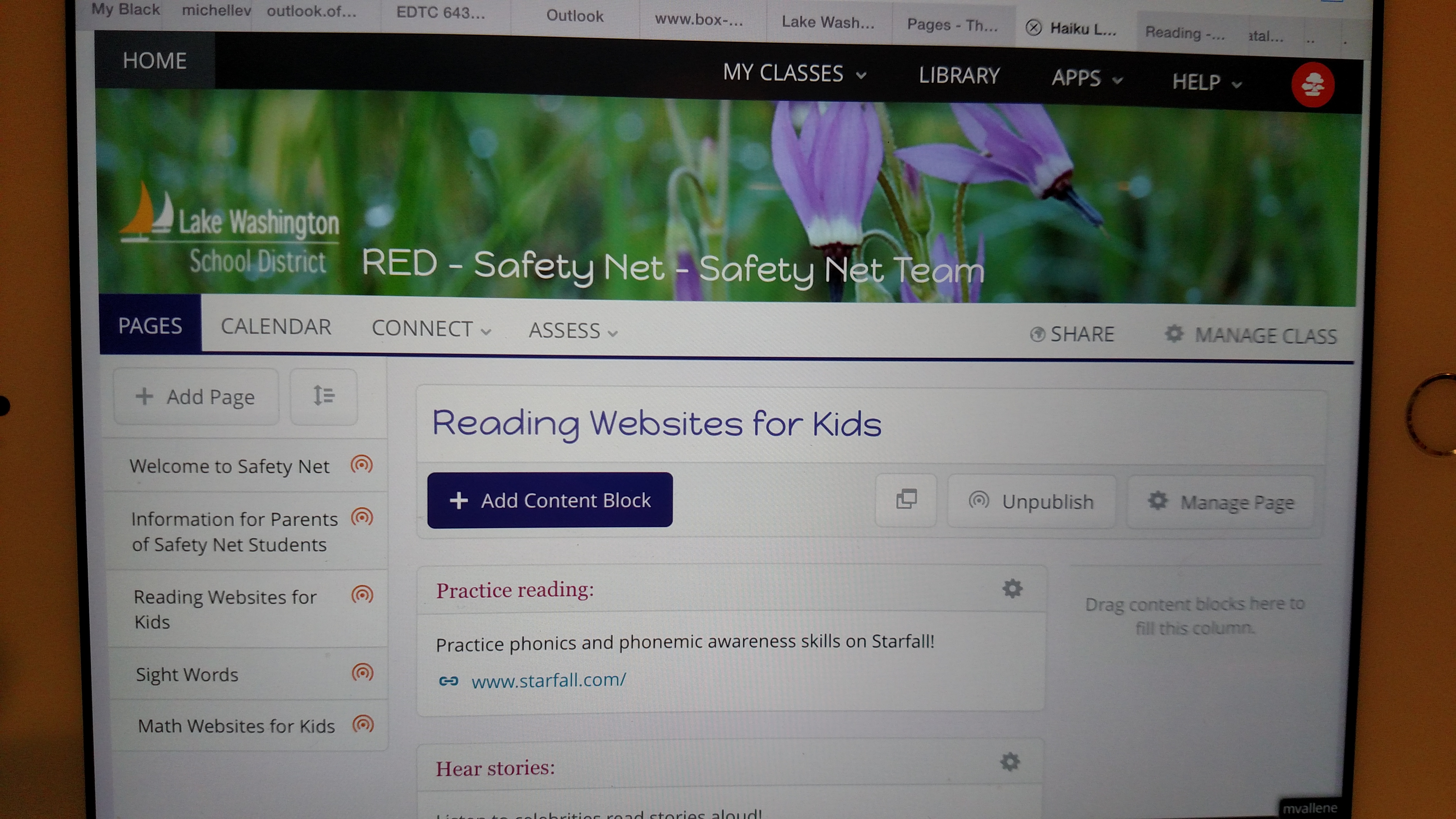 page, which has multiple resources and information on reading and math support. I have made charts for my students so that they can graph their progress and track their learning. I set up accounts for my students on our reading curriculum (Wonders) Adaptive Learning. The students can work on increasing their literacy skills online at home with fun games and activities.
page, which has multiple resources and information on reading and math support. I have made charts for my students so that they can graph their progress and track their learning. I set up accounts for my students on our reading curriculum (Wonders) Adaptive Learning. The students can work on increasing their literacy skills online at home with fun games and activities.

I have also been sharing my learning and the new resources with my colleagues throughout the building and on my PCC data team. In addition, I have been team teaching with one of our fourth grade teachers for daily math instruction. We collaborate and reflect on a daily basis about our teaching and student learning. Based on the learning in this class, I am now more cognizant of what it means to effectively reflect with a partner. I try to listen more, learn from my partner teacher’s strategies and ideas, and give feedback on what I feel is working and what needs to be adjusted. I have also learned to not feel as bad when receiving feedback from others and was reminded that we all make mistakes and that it is a learning process to improve your practice. Reflection, both individual and with others is critical to improving teaching practice and becoming a more accomplished teacher.
References
Brookfield, S. (1992). Why can’t I get this right? Myths and realities in facilitating adult learning. Adult learning, 3(6), 12.
York-Barr, J., Sommers, W., Ghere, G., & Montie, J. (2006). Reflective practice to improve schools: An action guide for educators (2nd ed.). Thousand Oaks, CA: Corwin Press.
Mindsets: How to motivate students (and yourself).(2013). Educational Horizons, 91(2), 16-21. Retrieved from http://ezproxy.spu.edu/login?url=http://search.ebscohost.com/login.aspx?direct=true&AuthType=ip&db=eric&AN=EJ999522&site=ehost-live; http://pilambda.org/horizons/mindsets/
Brewer, C. B. (2012). Music and learning: Integrating music in the classroom. Retrieved 11/29, 2015, from http://education.jhu.edu/PD/newhorizons/strategies/topics/Arts%20in%20Education/brewer.htm
Van de Walle, John A., Karp, K. S., & Bay-Williams, J. M. (2013). Reasoning strategies for multiplication and division facts. In K. Villella Canton (Ed.), Elementary and middle school mathematics teaching developmentally (Eighth ed., pp. 181-182, 183, 184, 186) Pearson.

The course objectives for Action Research were…
- Review a variety of current educational literature and research, examining best practices in the classroom setting.
- Explore and apply the Action Research process to provide the foundation for continuous inquiry and an effective solution to an issue.
- Understand that Action Research is a distinctive approach to inquiry that is directly relevant to the classroom setting and that it provides the means for teachers to enhance their teaching and impact student learning.
- Reflect on the Action Research process by sharing identified research focus, rationale, collection and analysis of data, and inquiry next steps through a presentation to peers.

At the beginning of this course, I had no idea what Action Research was. I obviously knew what research was, but didn’t know how the word “Action” changed the process. In the past, if I had something that I wanted to learn more about, I would research the topic and learn as much as I could about it. At the beginning of this course, I wondered how different Action Research was from the research that I had always done. Throughout the course, I have learned that the process of conducting Action Research includes:
- Observe students and record observations
- Analyze observations over time
- Choose a problem area
- Assess students at the beginning with three measures
- Research best practices
- Try out new research based strategies
- Assess with the same three measures at the end
- Make changes or adjustments to teaching practice as needed
This is a continuous, cyclical process that should be part of an accomplished teacher’s routine. Throughout this course, I learned how to observe my students and record my daily observations in a journal. I wrote about things that were bothering me that happened with my students or my instruction. By taking a look at these journal entries over time, I was able to see patterns of problem areas that arose. I chose the one that was bothering me the most and started off on an Action Research project. I found many excellent peer-reviewed journal articles about teaching students about having a growth mindset. As I read through the articles, I saw patterns in the research that showed how teaching about growth mindset can have a positive impact on students’ attitudes, behavior, and achievement. “Researchers have found that in dozens of studies that students with a growth mindset improve more in academics and other skills, and can even be less aggressive and more socially engaged” (Sparks, 2013).
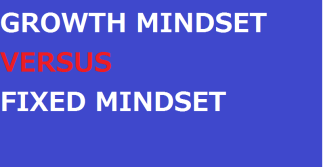
My thoughts for this study were inspired by research on growth mindsets in the classroom. This research led me to wonder about the connections between students learning about their brains and having a growth mindset and students’ ability to persevere through difficult learning challenges and not give up easily or become distracted. I also wondered about the use of the word ‘yet’ at the end of the statement, “I can’t do it…YET!” In addition, I wondered about how students learning to accept failure as part of the learning process would affect their attitudes and motivation to persevere through difficult learning challenges.
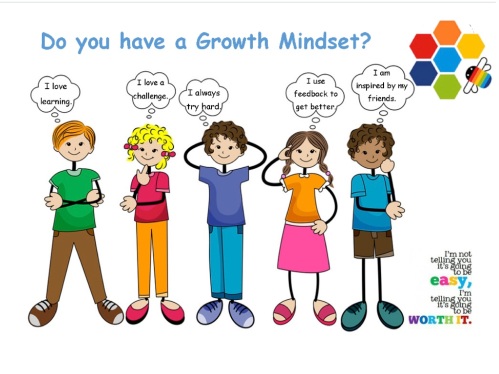
My plan was to investigate how to build a positive learning environment by teaching my students about the brain and having a growth vs. fixed mindset. My investigation had the potential to increase student motivation, time in learning, raise student achievement levels, and help students to understand that they are in charge of their learning and that challenges will grow their intelligence. “Teaching students a growth mindset results in increased motivation, better grades, and higher achievement test scores. Over a series of sessions, students were taught that their brains form new connections every time they learn, and that over time they can become smarter” (Dweck, 2007). This inquiry supports efforts to increase student performance levels and help students to meet or exceed academic standards. As a classroom teacher, this investigation can help me to develop new skills and strategies in order to help the typically lower performing students to feel better about themselves and know that they can make a difference in how smart they become. One of those strategies is teaching students about the power of ‘yet’. “The word ‘yet’ is valuable and should be used frequently in every classroom” (Dweck, 2010). Instead of students saying, “I can’t do it!” encourage them to say, “I can’t do it YET.” The hope is, that this will also help students to be more self-motivated and encouraging to their peers. It should also help to increase time on task and learning time throughout the period.
The following are excerpts from my weekly journal entries, which show my progression throughout the course:
Week 1: I see many students during my 4th grade math push-in who have low math self-esteem and truly believe that they can’t do the math. They put themselves down and cause disruptions or tune out so that they won’t even have to try. It seems like the 4th grade teacher and I are constantly putting out fires, trying to encourage students, keep them on task, and build their self-esteem. We are both wiped out each day at the end of the hour long period.

Week 2: This week I noticed that many of my students seemed to get frustrated easily. During math group I had students who got frustrated when they didn’t pass a multiplication time test. Sometimes they feel like they will never be able to pass. However, I don’t think any of them practice at home in order to pass the tests. I think they just expect that they will either pass or not pass. They don’t seem to attribute it to the amount of effort that they put in. Students in math class will jump to a conclusion that the material is too difficult for them before they even try. Some of the students got frustrated when they got problems wrong during our math work time. They don’t seem to understand that mistakes are a part of learning.

I think it will be very useful for me to conduct my action research project on empowering students to understand and be responsible for their own learning. I would like to research mindfulness and how it can help my students to have a more positive self concept, understand that mistakes are part of the learning process, and that the effort that they put into their own learning will create changes in their brains. I want them to be able to increase their frustration threshold and understand that they all have the power to learn and make a difference in their own lives and futures.
Week 4: I took my teaching partner out for dinner to discuss my plans for the project. Since we team teach for this class, I don’t feel like I can just try out anything that I want, without running it by her. Last week, I did give the three different assessments to my students as a baseline. One was multiple choice and the other was short answer and drawing a picture. I also used observation and had a check off sheet that I recorded data on while I was in the class. This was difficult because I was trying to observe, record data, and help kids with their math activities too. I’m sure I missed quite a few things while I was working individually with students. I put together graphs for the two surveys and have also been organizing my materials and conducting additional research in order to plan out my lessons to start on the program this Monday. I’m hoping that students will develop positive attitudes about mistakes and the learning process. I am also hoping that they will learn that taking on challenges and doing things that are hard for them will grow their brains. I’m hoping they will develop perseverance and more positive self-concepts.
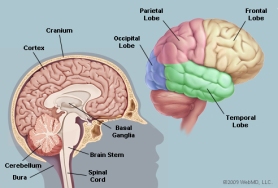
Week 5: I started teaching my 4th grade math students about the brain and how their brains learn new things this week. I think my kids are really starting to get it and I have seen small changes in their behavior and outlook on their abilities. We keep talking about how challenges grow the brain and that mistakes actually help the brain grow more than if you didn’t make any mistakes. This is a huge concept for the students that I work with. My plan for the next few lessons is about the importance of making mistakes and perseverance through those tough challenges. My students have been very receptive to the new learning and way of viewing themselves. I am hoping that it will actually have life-long benefits.
Week 7: I only saw my math group two times this week. I did do about 5 to 10 minutes at the beginning of those two math classes for my AR project. My students have been very interested in and receptive to learning about the brain and growth mindset. One student who gets really frustrated when she makes a mistake is starting to come around to understanding that mistakes are a part of learning and making them helps you grow your brain. Another student who usually has a bad attitude toward math, told another student that it was ok to make a mistake and to keep trying.
YouTube Growth Mindset Videos
Week 8: We watched additional YouTube videos about making mistakes, the brain, and growth vs. fixed mindset. We discussed famous people who have made mistakes or had other people tell them that they couldn’t do something, but they kept trying. Later that day one of my students came up to me and said she had seen a commercial for a new movie called “Eddie the Eagle” and that it was about a man who wanted to be a ski jumper in the Olympics, but everyone told him he couldn’t do it. She made the connection to what she was seeing in her own life. I have given my kids reminder sheets for them to put into their binders. One was a new way to look at failures…
F-First
A-Attempt
I-In
L-Learning
I also gave them a sheet about growth mindset vs. fixed mindset. I have noticed many of my students have chosen on their own to put these sheets on the outsides of their binder under the clear plastic. This way they can see it all the time. Yesterday I had the kids fill out a page with writing and drawing about what they have learned so far about the brain and growth mindset. I put these all together and printed a coloring book for each of them and gave it to them today. They were super excited!
Fixed vs Growth Mindset Poster
Through analyzing the data from my Action Research project I found a correlation between teaching my students about their brains and about having a growth mindset, with a decrease of problem behaviors and more positive academic self-concepts. I enjoyed conducting the Action Research project and have added the teaching of growth mindset to my strategy toolbox. My students seem much more positive about learning and now seem to have fewer frustration outbursts and melt-downs.
Negative Behaviors
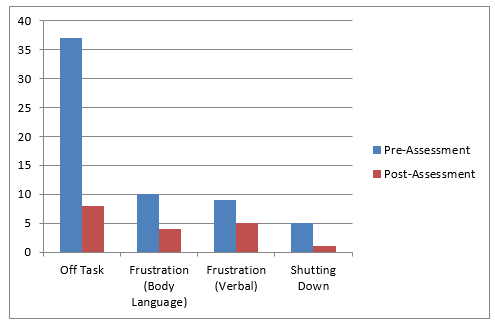
I plan to continue to do more informal Action Research projects on my own and with colleagues in order for us to improve academic achievement and/or to decrease disruptive student behaviors or attitudes. Action Research can be done anytime there is a problem or situation that needs to be solved.
As a leader, I would use Action Research to help myself and others target trouble areas and take time to work on immediate classroom needs instead of always doing blanket one-size-fits-all professional developments. Showing staff that you care about their specific issues, and that you will give them time to spend with colleagues doing an Action Research project based on those needs, will go a long way in establishing a trusting environment. This should also lead to increased student achievement and an increase in caring and supportive classrooms environments throughout the school. In addition, when teachers feel heard and get help from others with issues they are struggling with, they will most likely be happier with their jobs. School will be a more positive place to be and staff turnover should hopefully be decreased.
Resources
Pawlina, S., & Stanford, C. (2011). Preschoolers grow their brains: Shifting mindsets for greater resiliency and better problem solving. YC Young Children, 66(5), 30-35.
Dweck, C. S. (2007). Boosting Achievement with Messages that Motivate. Education Canada, 47(2), 6-10.
Dweck, C. S. (2010). Even Geniuses Work Hard. Educational Leadership, 68(1), 16-20.
Sparks, S. D. (2013). ‘Growth Mindset’ Gaining Traction As Ed. Strategy. Education Week, 33(3), 1-21.
Willis, J. (2007). Review of Research: Brain-Based Teaching Strategies for Improving Students’ Memory, Learning, and Test-Taking Success. Childhood Education, 83(5), 310-315.
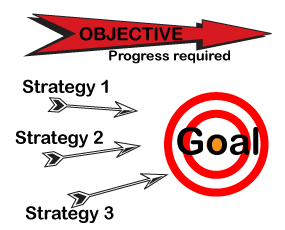
The course objectives for Survey of Instructional Strategies were…
Competence:
- Candidates will understand the role of a variety of engagement and instructional strategies as related to impact on student learning.
- Candidates will understand the components of effective lesson design using a variety of effective instructional strategies.
- Candidates will understand, design, and implement four lesson plans using a variety of instructional and engagement strategies including cooperative learning, advance organizers and schema activation, nonlinguistic representations and graphic organizers, summarizing, note making, setting objectives, providing feedback, recognition, homework, and the use of metaphors and analogies. Develop and demonstrate the ability to participate in a peer case study using: Collaborative inquiry designed to frame a problem, collect, analyze and interpret evidence, and determine next steps that will be implemented with students or staff as part of your leadership role.
Character:
Candidates will examine and reflect on personal professional use of instructional strategies in order to value current practices and make changes to professional practices when needed.
Service:
Students will discuss and participate in peer leadership activities to assist other school professionals in the application or instruction strategy best practices using the collaborative inquiry process.
Leadership:
- Students will be able to communicate instructional strategy information to others.
- Students will be able to read and understand the instructional strategies presented in the professional literature.
Reflection
At the beginning of this course, I was excited to learn about new teaching strategies that I could use with my students. I think we oftentimes get stuck in a rut using the same few teaching strategies and I wanted to learn how I could expand my repertoire. I was also interested in learning about which strategies had the highest effect size and when to use them most effectively. I have been a Safety Net teacher for over seven years now, and mostly teach small groups of struggling students. In addition to learning about strategies for small groups, I was interested in refreshing my knowledge on strategies for regular sized classrooms too.
During one of our first class sessions, we brainstormed a list of instructional strategies and also discussed how to become a visible learning teacher. The strategies that we brainstormed as a class include the following…
- Success criteria
- Students tracking progress
- Think/pair/share
- Feedback
- Graphic organizers
- Scaffolding/modeling
- Process through writing/drawing
- Making personal connections
- Peer tutoring
- Socratic seminars
- Gallery walk
- Jigsaw
- Thumbs up/down/sideways
The three keys to becoming a visible learning teacher include (Hattie, 2012):
- Teachers evaluate their effects on students (know thy impact)
- Teachers see learning through the eyes of their students
- Students see teaching as the key to their ongoing learning (teaching is a tool for students)
Some of the strategies that we took a more in-depth look at included advance organizers, cooperative learning, nonlinguistic representation, and summarizing/note taking. One of my classmates and I chose to do our presentation on advance organizers. We learned that advance organizers help students to activate their prior knowledge and also help them tie that knowledge to the new learning. Advance organizers come at the start of a lesson and can be things such as stories, pictures, videos, audio, etc. The four types of advance organizers include expository, narrative, skimming, and graphic.
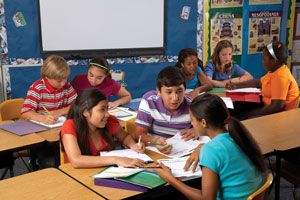
Cooperative learning is one of the most commonly used teaching strategies, but is also one of the most misused ones. In cooperative learning, all students need to be engaged, have a role to play, and be accountable for not only their own work, but the work of the whole group. Teachers can use formative and summative assessments to give feedback to their students on both their individual and group contributions. Giving students an opportunity to work with their peers, gives them a chance to build a deeper understanding of the material than if they just worked on it individually. Students also have better retention, motivation, and achievement when participating in a cooperative learning activity. The student tasks/roles need to be explicitly taught and practiced. Group size should be no more than 5 students. There are 3 types of cooperative learning (informal, formal, and base groups). Informal groups would be quick things like turn-and-talk, pair share, etc. Formal groups would last throughout an assignment, project or unit. Base groups are for the long term (whole year).
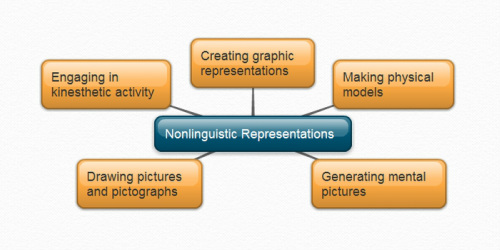
Nonlinguistic representations include graphic organizers, physical models or manipulatives, mental pictures, pictures, illustrations, pictographs, and kinesthetic activities. In my opinion, these are the things that really make learning come alive for students. Using nonlinguistic representations can help students to link their previous learning with new learning. They help students to “process, organize, and retrieve information from memory” (Dean, Hubbell, Pitler, & Stone, 2012). The six types of graphic organizers that are most commonly used in classrooms include: Descriptive, Time Sequence, Process/Cause-Effect, Episode, Generalization/Principle, and Concept. When helping students to create a mental picture, it is great if you can provide details related to all of their senses to help them to see, smell, taste, hear, and feel the imagery. I think it is very interesting that when students move around during a learning activity, their brains are building more neural connections and the learning is easier to remember (and kids love to move around).

In both summarizing and note taking, students need to condense the information down to the most essential parts. They also help students to organize information and put it into a form that helps them to retain the information more effectively and efficiently. There are both linear (outlining) and nonlinear (webs or maps) forms of note taking. There is no specific note-taking format that is the best, but it is important to explicitly teach students how to take notes. One way to start this process with students is to give them a template with some of the information already entered. Then as they progress through the lesson or reading, they can fill in the rest of the information. Teaching students the rule-based summarizing process should help them to understand how to summarize more effectively. The rules include: 1.) Take out material that is not important to understanding. 2.) Take out words that repeat information. 3.) Replace a list of things with one word that describes them. 4.) Find a topic sentence or create one if it is missing. There are six different summary frames that can help students when they are writing their summaries. They include: narrative, topic-restriction-illustration, definition, argumentation, problem-solution, and conversion. These frames have questions that help guide students in their summarizing. Reciprocal teaching is a common strategy for teaching students how to summarize. It includes the four comprehension strategies of summarizing, questioning, clarifying, and predicting. Students take on roles for each of the comprehension strategies. Important tips for note taking include: 1.) Give students teacher-prepared notes. 2.) Teach students a variety of note-taking formats. 3.) Provide opportunities for students to revise their notes and use them for review.

Through reading the text, Visible Learning for Teachers, by John Hattie, I learned about the progression of the lesson from beginning to end. Setting learning targets and teaching them explicitly to students is critical at the beginning of a lesson. It is important to set objectives, give students success criteria so that they know how to meet the objectives, and also give them feedback to guide their progress. In order to teach by setting objectives and providing feedback, there are certain things that we should do. We should…
- State the learning objectives to our students in terms that they can understand
- Help our students to tie those objectives to learning they have already done and to future learning
- Help our students to set their own learning objectives and give them feedback on those objectives
- Check for student understanding of the objectives
- Plan activities and lessons based on how well they will help students to meet the objectives
- Provide students with success criteria or a rubric before an assessment
- Give timely feedback throughout the unit of instruction
- After giving feedback, give students a chance to improve their performance
- Can use technology to help with feedback and documentation
One of the most important things to maximize student learning is co-planning lessons. Within our planning, we should take into account four things.
- Levels of performance (students’ prior achievement, developmental levels, confidence, & motivation)
- Learning intentions (targeted learning/achievement outcomes)
- Rate of progress (success criteria/progression)
- Co-planning and discussion (teachers plan and critique lessons together)
John Hattie states that a caring, positive classroom climate is one of the critical components needed to promote learning. The classroom should be a trusting environment where questions and mistakes are welcomed. Teachers should explicitly teach the learning targets and the success criteria so students know where they are going and what it looks like to get there. Students need to be taught how to work cooperatively and what the norms and rules of the class and groups are. Hattie states that the four criteria for “relational trust – interpersonal social exchanges that take place in a school community (Hattie, 2012)” are…respect, competence, personal regard, and integrity. We want to challenge students and to help them to be aware that through challenge and learning, there will be mistakes and questions. Both teachers and students should see mistakes as opportunities for learning.
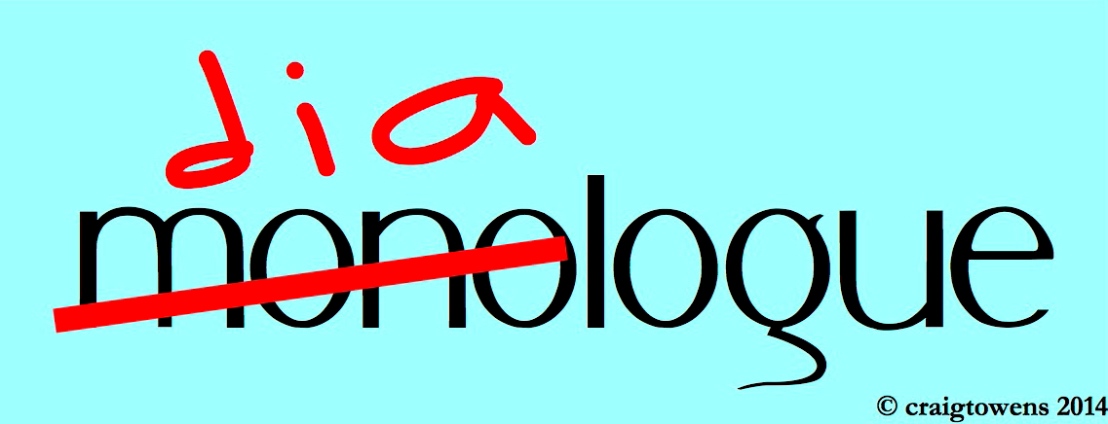
Classrooms should have more dialog than monologue happening throughout the day. Currently, in most classrooms, the teacher does most of the talking. Hattie suggests that we incorporate more teacher-student and student-student discussions into our lessons. Teachers should be listening more than they are talking. We can learn a great deal by listening to our students. We can determine what they already know, any misconceptions they might have, and gaps in their learning.
Social relationships are very important for students to learn effectively. For example, when students move to a new school, Hattie says, based on current research, that “…the single greatest predictor of subsequent success is whether the student makes a friend in the first month (Hattie, 2012).” Peers can be tutors, give feedback, and provide friendship. Cooperative learning is a great strategy to build on the fact that peers and working with other students is so important to the learning process.
Hattie suggests that we see learning through the eyes of our students. We should be more focused on the learning, rather than just the teaching. Once we understand how our students learn and what stages they are in, we can more effectively make teaching decisions. We should teach our students how to use strategies within our content areas, give them time to practice those strategies, and then we can assess how effective those strategies were in promoting learning.
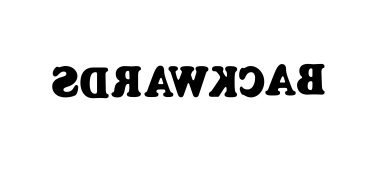
Hattie believes that learning should start with a “backward design” so that we start with the learning objectives and success criteria in mind and then come up with the strategies and activities we feel will best move our students forward in their learning to meet the objectives. There are four stages of motivation…
- See a gap
- Goal-setting
- Strategies
- Close the gap
Many students get stuck at stage one. We as teachers, need to pinpoint which stage of motivation that a student is in and help them to move from that stage to the next.
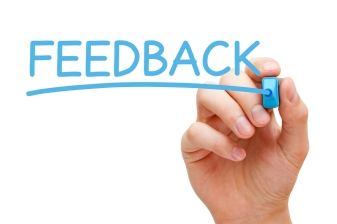
Feedback has one of the highest effect sizes on student learning and is therefore critical in the teaching and learning process. Feedback helps students to know where they are and what they need to do to meet the lesson objectives and success criteria. Feedback can be directed toward processes, clear up misconceptions, and motivate students. There are four levels of feedback (task, process, self-regulation, and self) and there are three critical questions to keep in mind when giving feedback. 1.) Where am I going? 2.) How am I going there? 3.) Where to next? The question of where I am going relates to the success criteria and lesson objectives and making them clear to students. Students can monitor and assess their progress toward the learning targets daily to see their progress. There are also three phases of learning which include: novice, proficient, and competent and students move through these phases as they learn and solidify new learning. Errors are an important part of learning and should be welcomed in the classroom. We need to explicitly teach how errors help us to learn even more. When I taught about having a growth mindset to my 4th grade math students, we learned that making mistakes creates more connections in your brain and you actually learn more than when you get all the answers correct. When my students get frustrated when they make a mistake, I remind them of the learning we did on having a growth mindset and how mistakes “grow their brains”.
Prompts are great tool for eliciting feedback. Prompts can be organizational, elaborative, and can monitor progress. Page 129 gives some great question prompts to use with students (Hattie, 2012). Teaching students to use prompts while giving peer feedback helps to make the feedback more effective. There is a great rubric on page 133 that guides students in giving peer feedback (Hattie, 2012). Feedback needs to be specific, focused, and clear. As teachers contemplate their effect on the learning of their students, they should look at lessons through the eyes of their students.
The additional sources that I read related to feedback were: The 2 Es, (Kroog, King Hess, & Araceli Ruiz-Primo, 2016) and Seven Strategies of Assessment for Learning (Chappuis, 2009). Formal formative assessments are defined as being planned in advance and should help to move students forward in their learning by providing feedback or changes of instruction. We need to have students show us what they are thinking in order to understand where they are and where they need to go next. Our feedback comments can be both descriptive and prescriptive. A prescriptive comment helps students to understand how to improve. A descriptive comment lets students know why something was right or wrong. It is not effective to put a score on a paper if you want to provide comments. Students are more interested in the score and will not get much out of the comments. Plus, it is too late to make any changes based on the feedback when a grade was already assigned. Feedback should be actionable. An effective way to give feedback to younger students is the Stars and Stairs method. The star represents what the student is doing well and the stair represents steps the student needs to take to improve. For older students we can use the “That’s Good” and the “Now This” feedback frame.
Throughout this class we also practiced our new strategy learning by writing up lesson plans, teaching them to our students, and reflecting on how they went. We also conducted extended research related to some of these different teaching strategies.
I chose to focus on CCSS.ELA-Literacy.RL.4.4 (Determine the meaning of words and phrases as they are used in a text) with both my cooperative learning and advance organizer lessons. One of them was with a higher level narrative text and the other was with a grade level information/expository text. I teach Safety Net and work with students who are below standard in reading. These students oftentimes don’t have a repertoire of effective reading strategies. Through my outside research I found the importance of teaching these strategies explicitly. “Despite the clear and longstanding connection between meaning vocabulary and reading comprehension, programs designed to teach vocabulary have often had surprisingly little impact on overall reading ability. One possible reason for this small effect is that teaching methods may not make this vocabulary-to-comprehension connection explicit for the students” (Greenwood & Flanigan, 2007). “This substantial research review underscored the need for strategy instruction to be explicit, especially for poor comprehenders” (Bishop, Reyes, & Pflaum, 2006). This same article stated that students should be taught what they termed as “Global Reading”, which is comprised of activating prior knowledge, making text predictions, skimming text, using context clues, and using text structure and textual features (Bishop, Reyes, & Pflaum, 2006). Based on these findings, I incorporated activating prior knowledge through the use of advance organizers such as skimming the book and its different text features and talking and drawing about what they already knew about the topic. I also gave them a graphic organizer to help them organize and track their learning.
I teach Safety Net, so I oftentimes forget about using cooperative learning strategies because we are already in a small group. Throughout this course, however, I have tried using more partner groupings and structured cooperative learning activities and have had great success with them. I have noticed that my students have been more engaged and have enjoyed working with a partner. They have helped each other and shared their ideas. Through my formative assessments and observations, I noticed that the partner groups were picking out the same challenging words that I predicted that they would in the text. With their partner’s help, they looked at context clues within the text to help them figure out what the words meant. They filled out their findings on a graphic organizer that I provided for them. They were able to figure out what all the words meant. The students who I am working with are 4th graders who are below standard in their reading. I am exposing them to complex text by working with a 5.4 reading level book. They are testing out the strategy of using context clues to decipher the meanings of challenging words within a challenging text and are succeeding and enjoying it! I ended up modeling the strategy for a bit longer than I had anticipated. We went through finding three different words/phrases before I sent them off to work in their partner groups. Sometimes it can be challenging to know exactly how much time I will need to spend on a particular part of the lesson. Through my observation of my students, I noticed that they needed more modeling time than I had originally planned.

I taught two lessons to my fourth grade before-school reading group using nonlinguistic representations. I am helping my students to access higher level text by reading aloud “The Trolls” by Polly Horvath. This book is at a 5.4 reading level and has complex text, vocabulary, and phrases. My lesson objective for both lessons was to have my students be able to paraphrase sections of the text that were read aloud to them. During one of the lessons, I had my students draw quick sketches of what they were hearing in the text to help them to visualize and make the story more concrete for them. During the second lesson, I had them do the same thing, but with Play Dough. After I finished reading aloud, I had each student share their drawings or sculpture and describe what was happening in the story. In this way, they were able to use nonlinguistic tools to help them to visualize and then verbalize what they had heard. At the conclusion of each of the lessons, I asked students the following questions: What is the strategy we learned today to help us follow what happens in the text? How was this similar to what you did yesterday with drawing as I read aloud? What do you have to do when you are listening to a story and working with Play Dough or drawing? What does your mind do? What if we didn’t have the Play Dough or the drawing paper to work with and you were listening to a story or reading? What would you do? Both lessons went well and students were able to paraphrase the part of the story that I read aloud by using their Play Dough sculptures and their drawings. They were very engaged in the lesson and were also able to explain that we create pictures in our heads when we listen or read a text and that it is a good way to help us remember and focus on what we are reading. The drawing and sculpting helped students in a concrete way to see what images that their minds were creating while listening.

While reflecting on our collaborative inquiry project, My fourth grade team and I felt that the evidence showed us that we were correct in choosing the inquiry question that we had, as many of our students were struggling in this area. After we implemented the strategies, we saw a marked improvement in our students’ multiplication skills. We made the assumptions that our students were struggling with their multi-digit multiplication problems due to a lack of basic fact knowledge. We also made the assumption that using a variety of strategies, such as scaffolding, flip charts, songs, flash cards, IXL, and having students track their progress would help them with these basic facts and with their multi-digit multiplication. One of the strengths of the strategies that we used was that we saw large gains in assessment scores among our students. One of the weaknesses of the strategies that we used, based on the data and the fact that some of our students didn’t master their facts and multi-digit multiplication, was that we didn’t have enough time in the learning cycle. If we had had more time, we feel that we could have gotten more of our students to the mastery level.
Our collaborative inquiry team felt that the strategies that we used to help our students to build their multiplication skills were effective. Next time however, we feel that we need to spread the process throughout the school year to work on building these skills over time, so that we aren’t rushed for results. In that way, we can focus more on helping our students to have a stronger foundation of their basic facts and more gradually build up to multi-digit problems. We also feel that spending more time on each of these strategies would definitely benefit our students.
It was very helpful to work together as a team to address our students’ needs as a whole grade level. We were able to share our problems and brainstorm solutions and strategies together. We each tried out the strategies and came back to share our progress and to discuss how it was going and look at student assessment data. We then revised our teaching to address any issues that we hadn’t anticipated at the start. We were able to come up with more strategies and ideas when working with the group, as opposed to thinking just on our own. We were also able to celebrate our successes together and determine what attributed to the student achievement so that we could continue with those teaching methods and strategies in the future. Collaborative Inquiry is a very effective way to team together to increase student learning and achievement.
References
Hattie, J. (2012). Visible learning for teachers: Maximizing impact on learning. London: Routledge.
Dean, C. B., Hubbell, E. R., Pitler, H., & Stone, B. (2012). Classroom instruction that works – research-based strategies for increasing student achievement (2nd ed.). Denver, CO: McRel.
Chappuis, J. (2009). Seven strategies of assessment for learning. Upper Saddle River, NJ: Pearson Education.
Kroog, H., King Hess, K., & Araceli Ruiz-Primo, M. (2016). The 2 Es Implement Effective and Efficient approaches to formal formative assessment that will save time and boost student achievement. Educational Leadership, April, 22-25.
Bishop, P. A., Reyes, C., & Pflaum, S. W. (2006). Teaching tips: Read smarter, not harder– global reading comprehension strategies. Reading Teacher, 60(1), 66-69. Retrieved from http://ezproxy.spu.edu/login?url=http://search.ebscohost.com/login.aspx?direct=true&Au thType=ip&db=eric&AN=EJ749433&site=ehost-live; http://dx.doi.org/10.1598/RT.60.1.7
Greenwood, S. C., & Flanigan, K. (2007). Overlapping vocabulary and comprehension: Context clues complement semantic gradients. Reading Teacher, 61(3), 249-254. Retrieved from http://ezproxy.spu.edu/login?url=http://search.ebscohost.com/login.aspx?direct=true&Au thType=ip&db=eric&AN=EJ778606&site=ehost-live; http://dx.doi.org/10.1598/RT.61.3.5





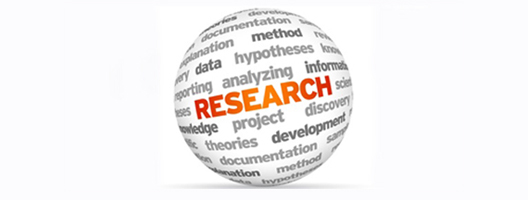





 page, which has multiple resources and information on reading and math support. I have made charts for my students so that they can graph their progress and track their learning. I set up accounts for my students on our reading curriculum (Wonders) Adaptive Learning. The students can work on increasing their literacy skills online at home with fun games and activities.
page, which has multiple resources and information on reading and math support. I have made charts for my students so that they can graph their progress and track their learning. I set up accounts for my students on our reading curriculum (Wonders) Adaptive Learning. The students can work on increasing their literacy skills online at home with fun games and activities.



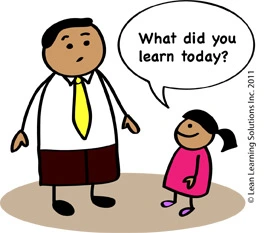



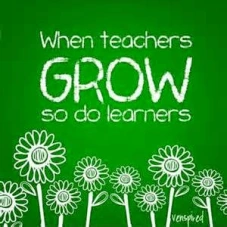




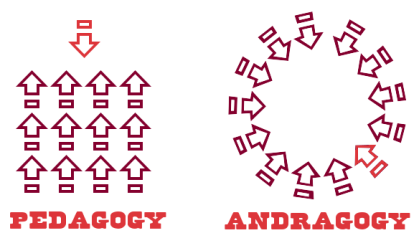



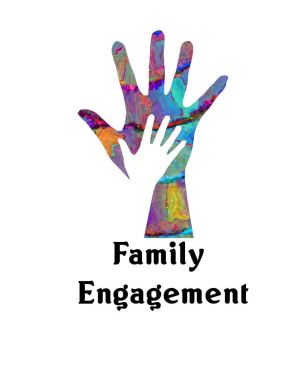
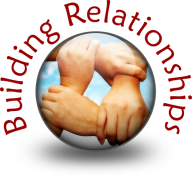
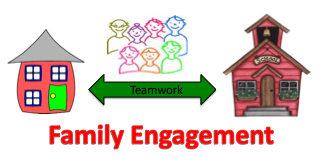
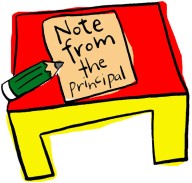




















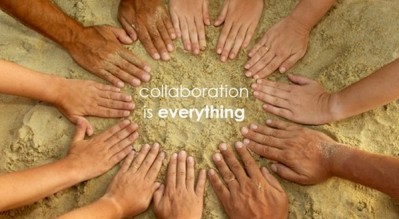


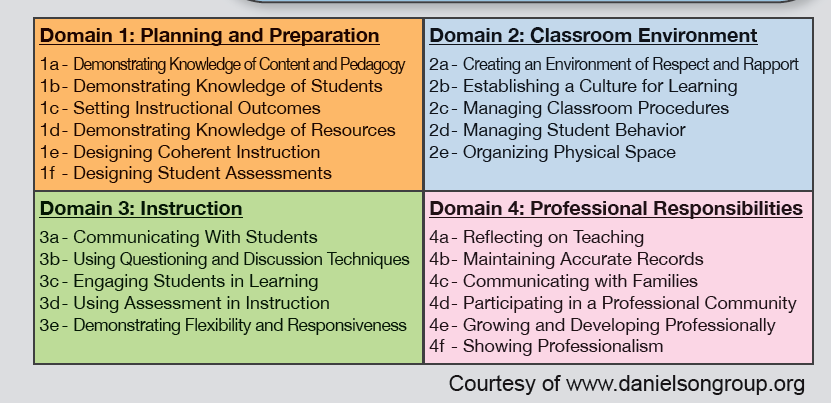


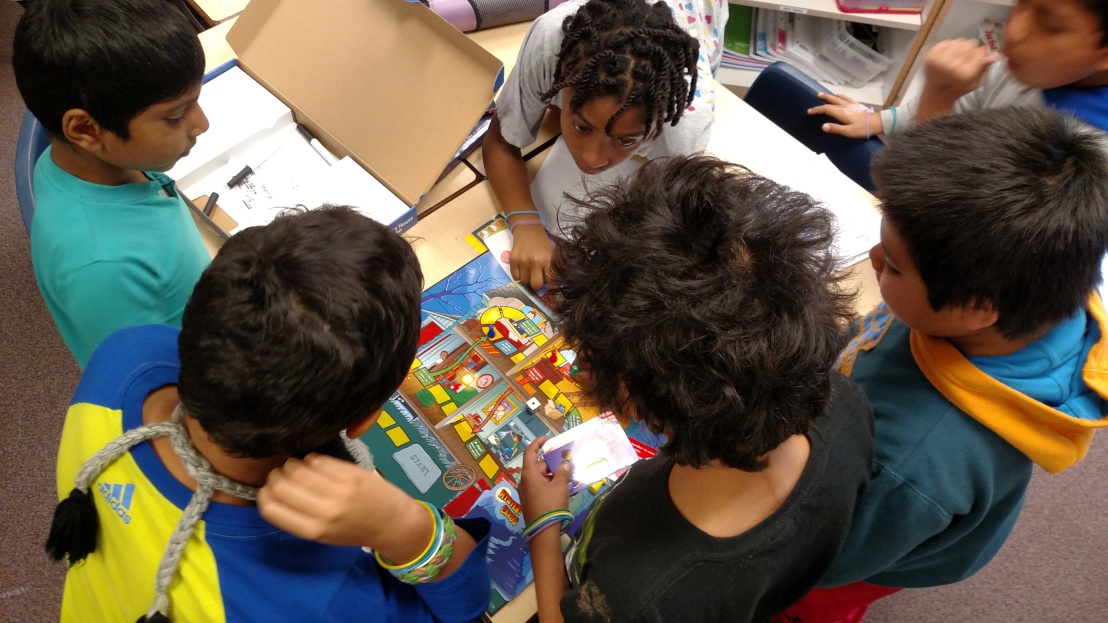
 page, which has multiple resources and information on reading and math support. I have made charts for my students so that they can graph their progress and track their learning. I set up accounts for my students on our reading curriculum (Wonders) Adaptive Learning. The students can work on increasing their literacy skills online at home with fun games and activities.
page, which has multiple resources and information on reading and math support. I have made charts for my students so that they can graph their progress and track their learning. I set up accounts for my students on our reading curriculum (Wonders) Adaptive Learning. The students can work on increasing their literacy skills online at home with fun games and activities.